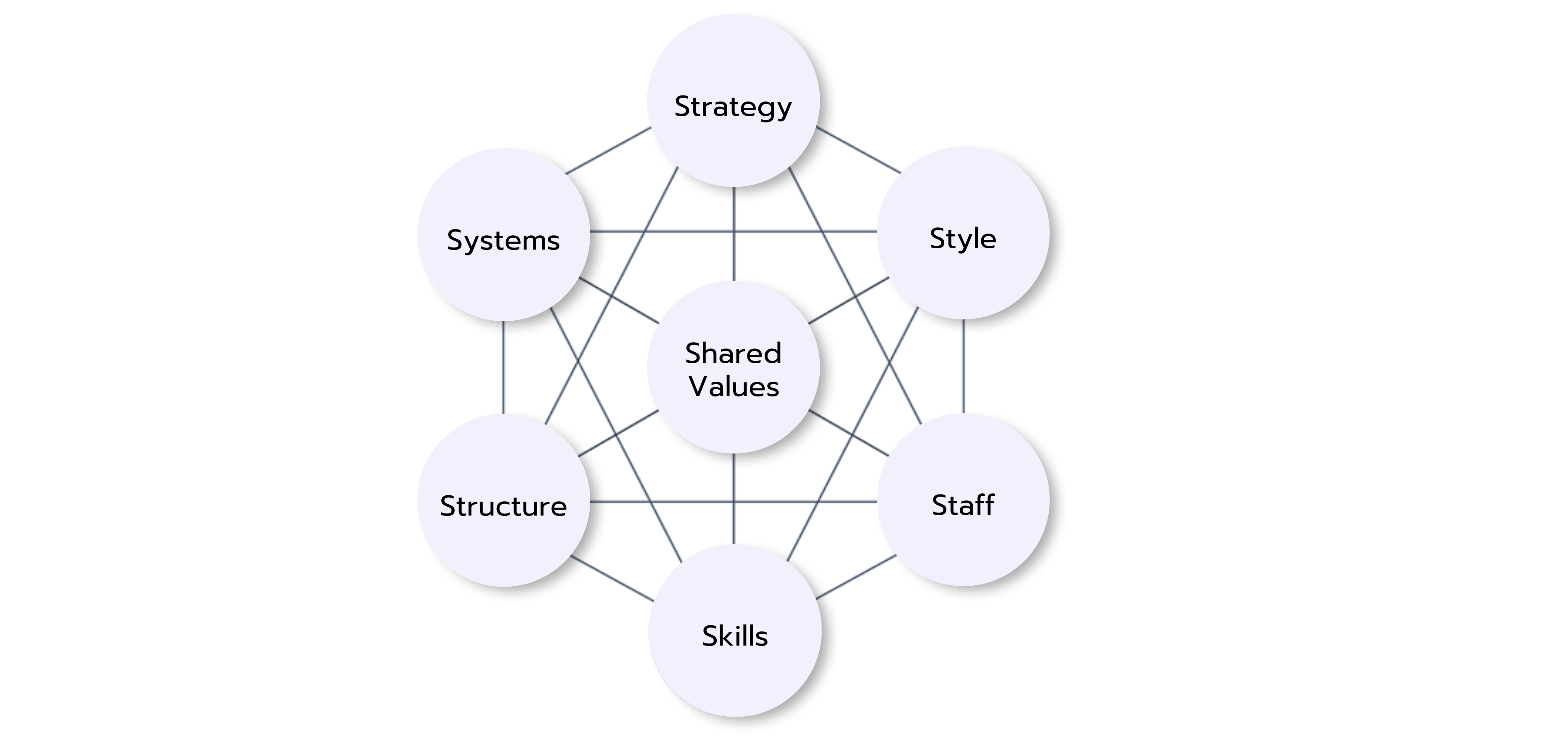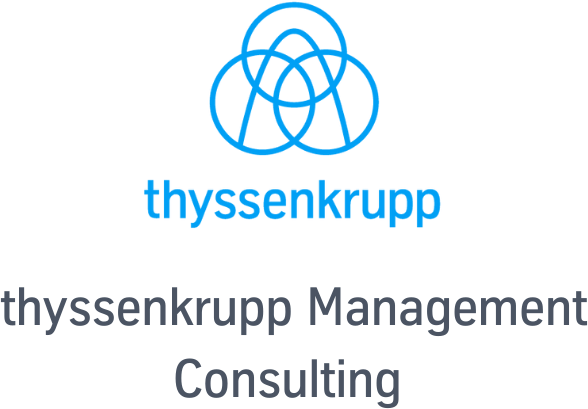If you're aiming for a career in consulting, learning about key frameworks is essential. One of the most popular and effective tools is the McKinsey 7S Framework. Created by McKinsey & Company, this framework helps you understand and evaluate how different parts of an organization work together to improve overall performance.
In this post, we’ll explain the seven elements of the McKinsey 7S Framework and how you can use it in case interviews. Whether you're preparing for consulting roles or just want to boost your business knowledge, this framework is a valuable tool to have in your skillset!
Understanding the 7S-Framework of McKinsey
The McKinsey 7S Framework, developed in the 1980s by Julien R. Philips, Tom Peters, and Robert H. Waterman Jr., is designed to help organizations improve performance by focusing on seven key elements. These elements are split into two categories: hard and soft components.
- Hard components are easier to define and manage. They include things like company structure and strategy, which can be clearly mapped out and adjusted.
- Soft components are more abstract and subjective. These involve elements like culture and leadership style, which are harder to measure but just as important for a company’s success.
The balance between these hard and soft elements is what makes the 7S Framework a powerful tool for evaluating and improving how an organization operates.
The Seven Elements of the McKinsey 7S Framework
At the heart of any organization lies its shared values—the principles that shape its culture and define its identity. These core values influence decision-making, behavior, and the overall direction of the company.
Before we explore each element in more detail, here's a quick overview of the seven components that make up the McKinsey 7S Framework:

- Strategy:
This component describes the course of action an organization will take to accomplish its goals and objectives. It entails comprehending the organization's long-term goals, market emphasis, and competitive positioning. - Structure:
The organization's official hierarchy, reporting lines, and division of activities and responsibilities are all included in the structure. It is essential to enable efficient decision-making, coordination, and communication inside the business. - Systems:
The processes, practices, and routines that give the organization its ability to run are represented by systems. This encompasses all aspects, from information systems and performance management systems to operational processes. - Skills:
Workforce capabilities and competencies are referred to as skills. It encompasses both the specialized, industry-specific technical abilities and the more general talents necessary for the effective implementation of the organization's goal. - Staff:
The term staff refers to the individuals who make up a company, as well as their qualifications, skills, and experience. It entails identifying the ideal talent, determining the makeup of the team, and ensuring that the objectives of the individual and the business are in line. - Style:
The organization's leadership and management styles are represented by styles. It includes all the beliefs, customs, and practices that form the organization's culture and direct how work is carried out. - Shared Values:
The fundamental principles and tenets that form the foundation of an organization's culture and determine its identity are known as shared values. They serve a common purpose and provide the foundation for decision-making and behavior within the organization.
How Can the McKinsey 7S-Framework Be Applied During Your Case Interview?
The McKinsey 7S-Framework is a valuable tool for analyzing and diagnosing organizational issues. During case interviews, you may be presented with a business problem and asked to provide recommendations. By applying the 7S-Framework, you can structure your analysis and demonstrate a systematic approach to problem-solving.
To effectively apply the framework in a case interview, the following steps can be useful:

1. Understand the organization’s situation:
Start by gathering information about the company, including its background, industry, and the specific challenges it faces. This step sets the foundation for your analysis by helping you understand the context in which the 7S model will be applied.
2. Identify the relevant elements:
The 7S Framework includes seven elements: Strategy, Structure, Systems, Shared Values, Style, Staff, and Skills. Depending on the organization’s situation, some of these elements will be more important than others. For instance, if the company is undergoing a leadership change, the "Style" and "Shared Values" elements might be key. Focus on the most critical areas, but keep in mind that all seven elements are interconnected.
3. Analyze how the elements are connected:
The 7S Framework emphasizes that these elements don’t exist in isolation—they interact and influence each other. Look at how each element affects the others. For example, if the company’s "Strategy" is not aligned with its "Structure" or "Staff," it can cause inefficiencies or confusion. Understanding these connections will help you identify gaps or areas where the organization might be misaligned.
4. Develop actionable recommendations:
Once you’ve identified areas of misalignment or improvement, create recommendations that address these issues. Keep in mind that changing one element often impacts the others. For example, if you recommend changes in the company’s structure, think about how this might require adjustments to staff roles, systems, or even the organization's values. Your suggestions should be balanced and realistic, ensuring the entire organization can move forward in a cohesive way.
5. Present your findings clearly:
Finally, when presenting your analysis, make sure to explain your thought process clearly and use the language of the 7S Framework to demonstrate your structured approach. Highlight the reasons behind your recommendations and show how they address the organization's specific challenges, while also being mindful of how changes in one area will impact others.
This way, the 7S Framework helps you think holistically about how various parts of an organization work together, ensuring that any changes or improvements are well-aligned and sustainable.
The 7S Framework in Case Interviews
The McKinsey 7S Framework is a powerful tool that gives you a structured way to analyze how organizations operate. If you pursue a career in consulting, mastering this framework can give you a real edge during your case interviews. By using the 7S model, you’ll show interviewers that you can think critically, tackle complex business problems, and offer well-organized recommendations.
💡 A final tip: The key to acing case interviews is practice. The more you apply the 7S framework to different case studies, the more comfortable and confident you'll become. With enough preparation, you’ll not only improve your problem-solving skills but also stand out to potential employers.



